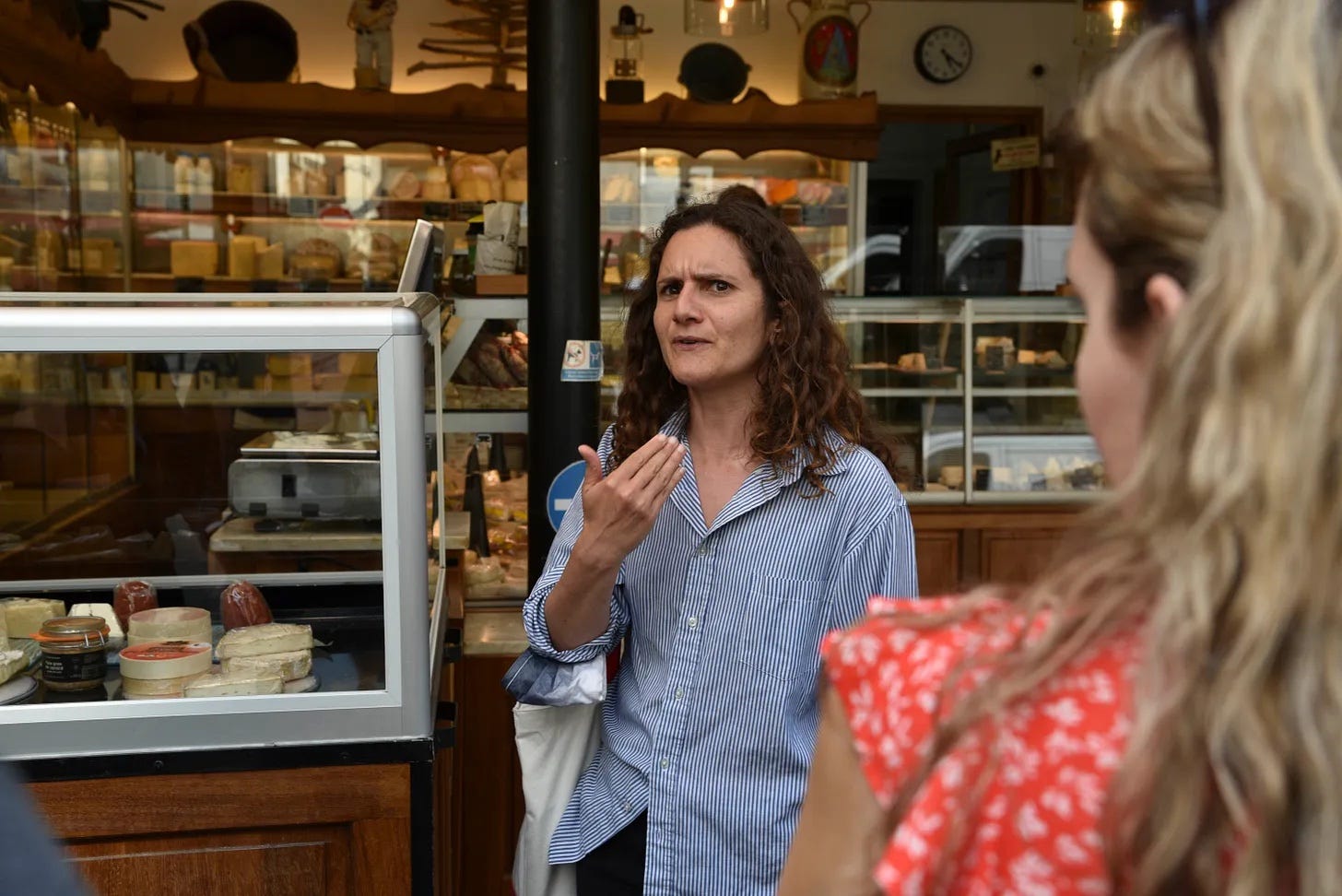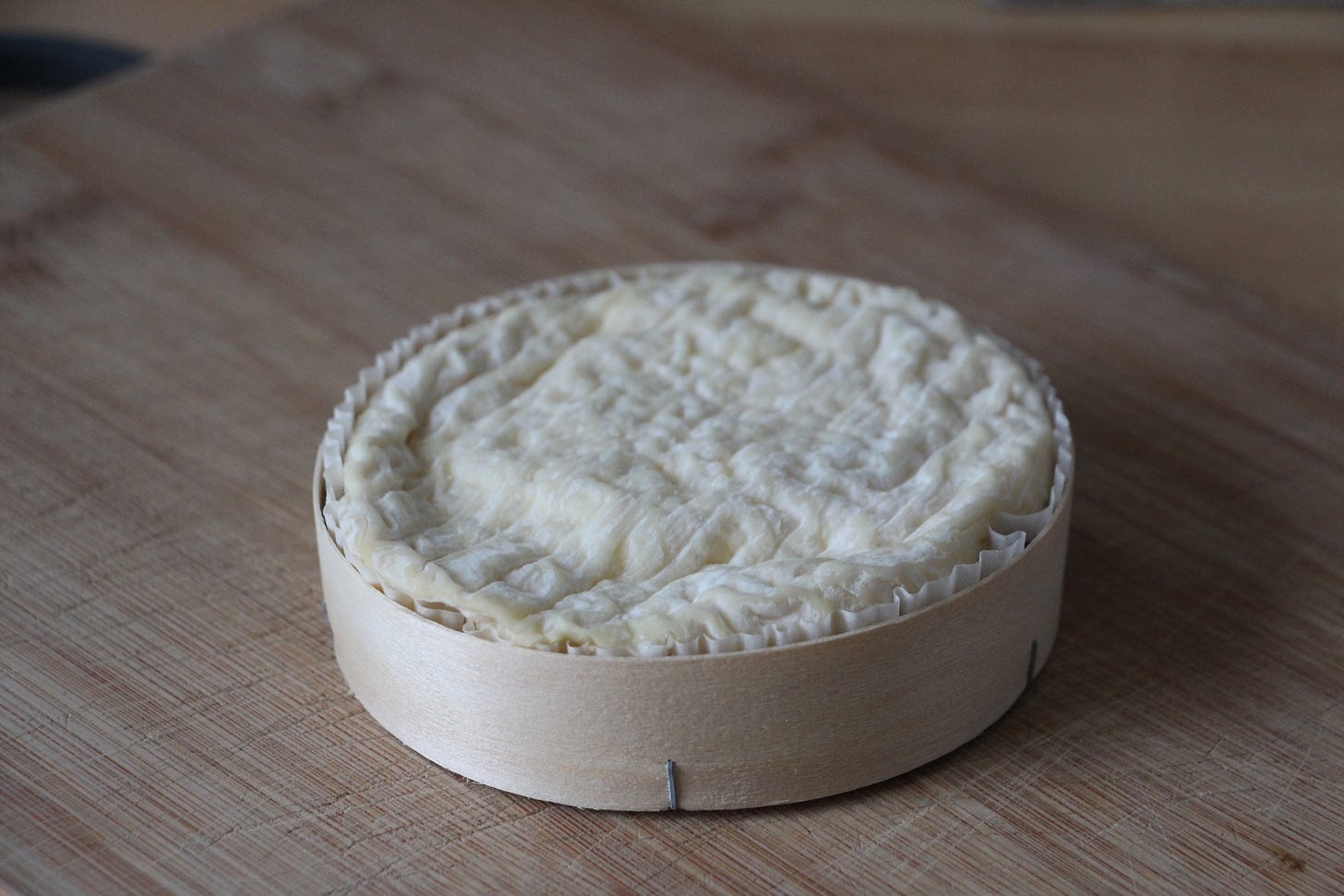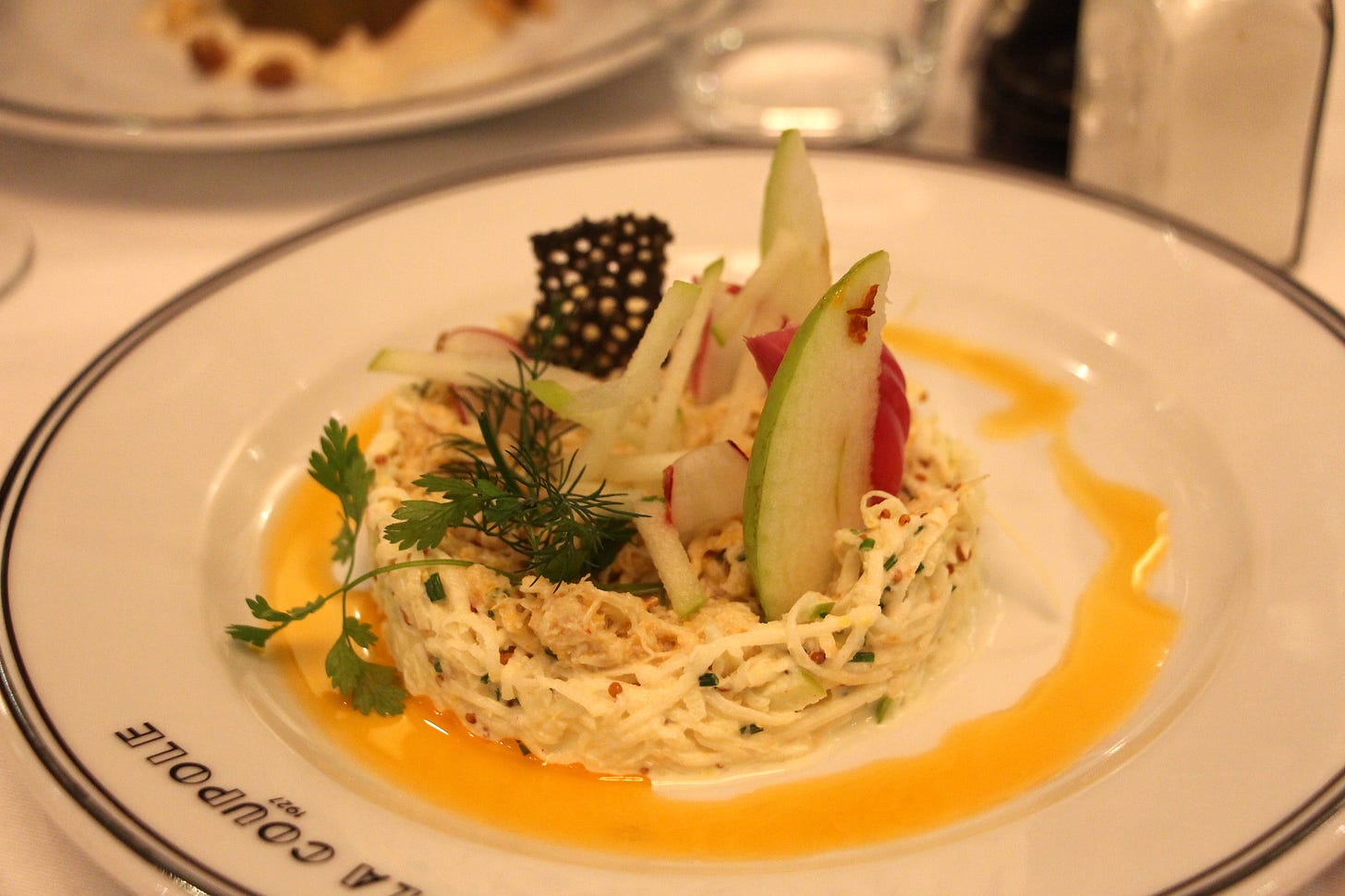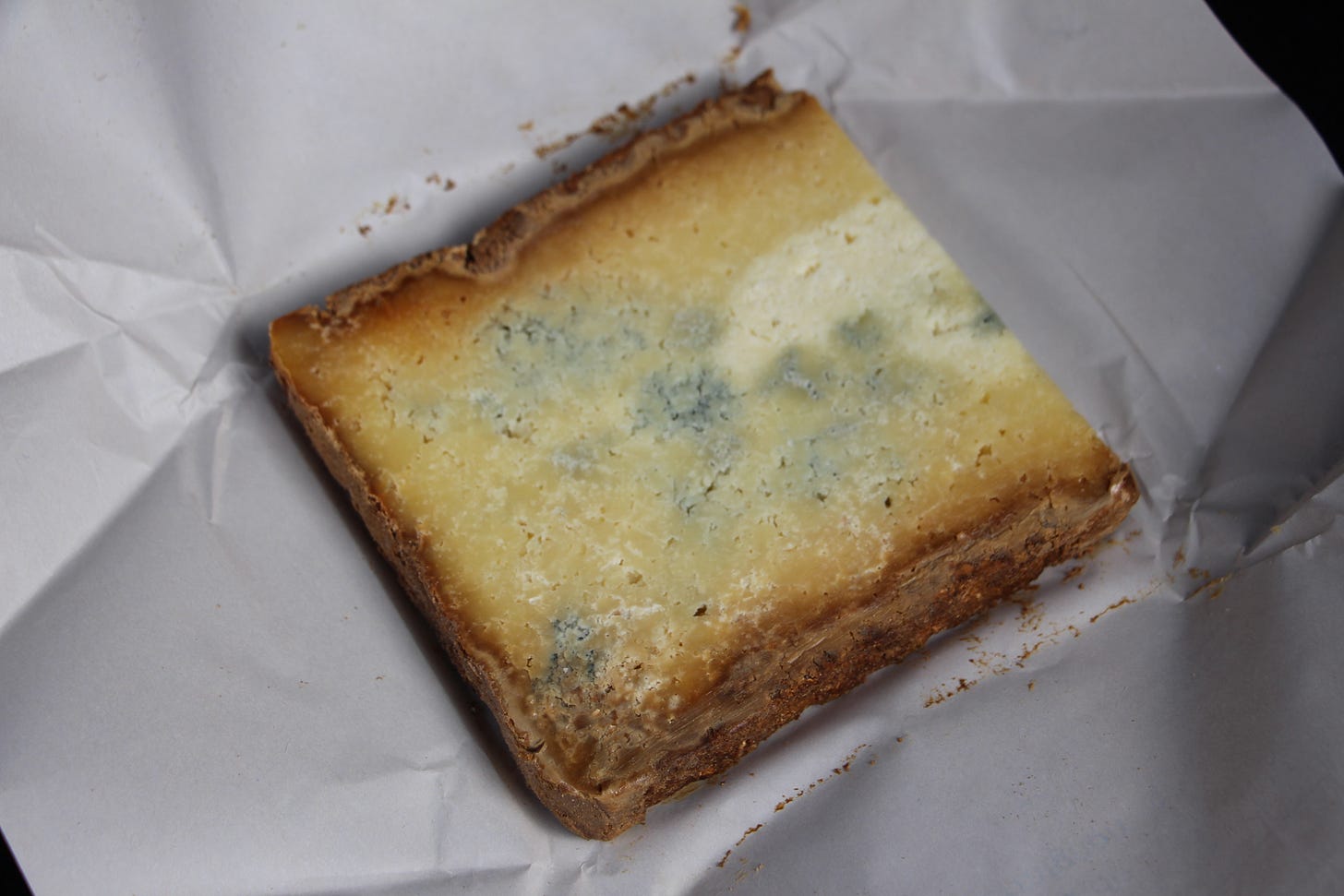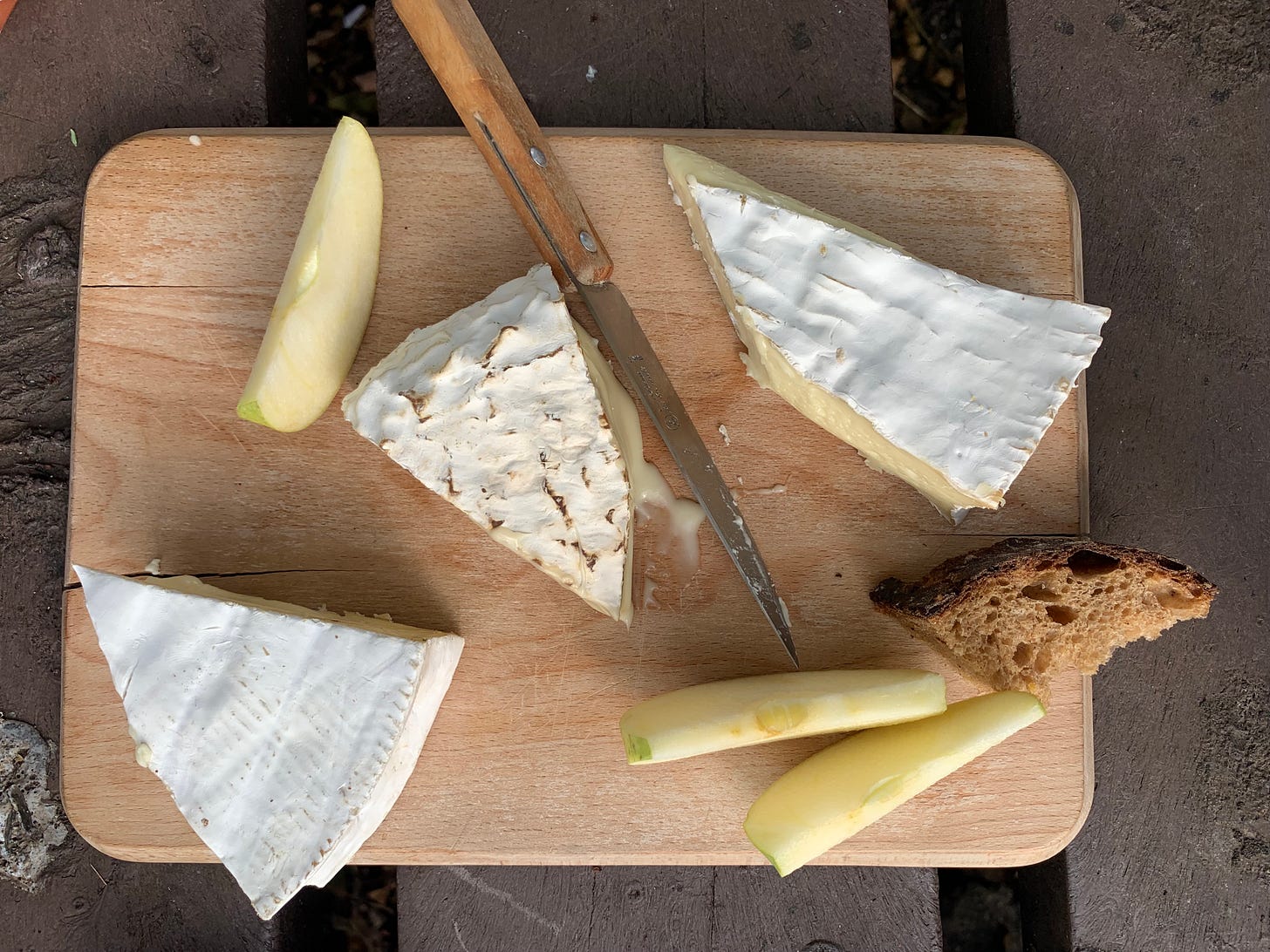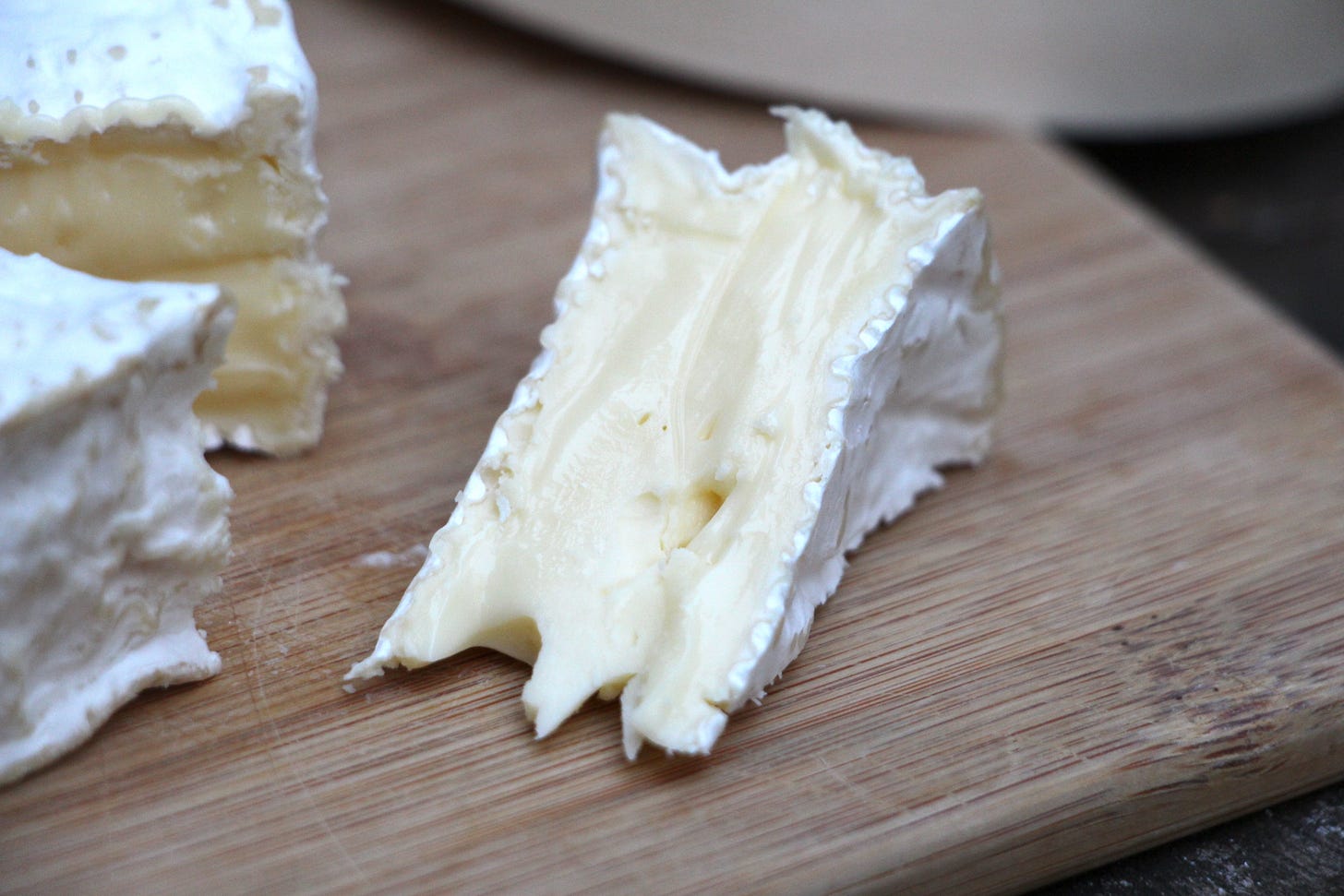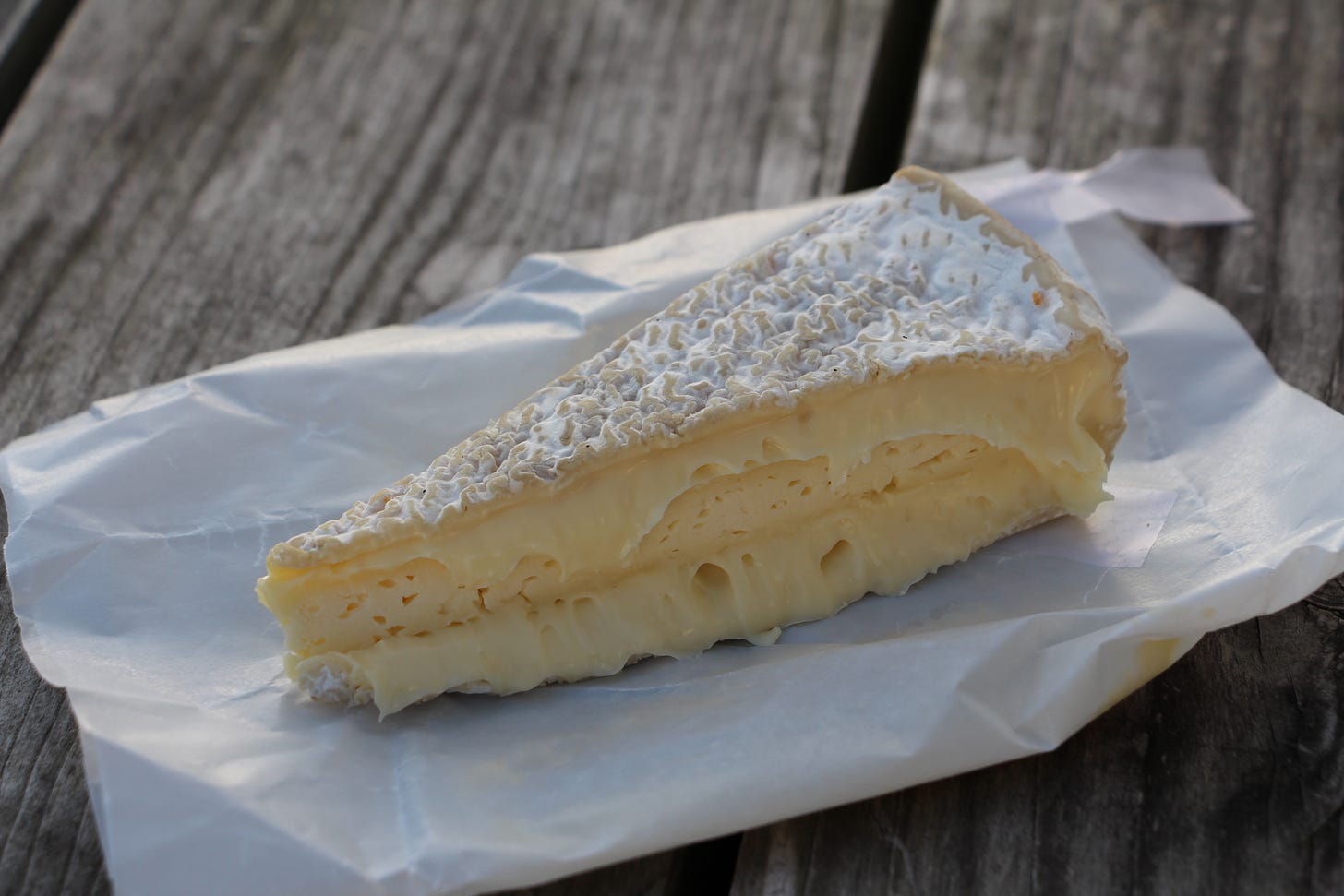Emily in France 🇫🇷 The Cultural Side of Cuisine
Eating isn't just about food – especially not in France.
I regularly get to go to three-hour lunches by myself, which, all things considered, is a pretty cool job perk. I’ve lingered over the multi-course offerings at Le Jules Verne; I've enjoyed a meal at the storied Bernard Loiseau with a silver crab as my sole companion. I’ve gotten to take full advantage of the communal table at which all diners enjoy the multi-course tasting menu at nHOME. And while I know this experience – that of dining alone – to be one that many fear, honestly, I find it makes it far easier to focus on my job. I can take the time to analyze the construction of a dish, to observe the dining room, to assess the presence and efficiency of the service. I can take notes. I can linger on a bite, allowing its flavors to be the only noise in my mind.
From a work perspective, eating alone is the ideal. And yet, it should come as no surprise that it’s far from my favorite way to eat.
I’m lucky enough to have grown up in a family that always sat down to have dinner together: meals of simple yet delicious food that everyone from my picky baby sister to my foodie father could enjoy. Every evening, no matter how busy we got, our family of six crowded around the table to enjoy roast chicken with mashed potatoes or my mom’s famous homemade lasagna.
But let’s be honest: In America in the ‘90s, my family were the outliers.
Sharing meals is far from as culturally important in the U.S. as it is in France, where I’ve been told off for having lunch at my desk and where people apologize for eating in public. Here, the very word for a friend – copain – comes from the word for someone with whom you share bread. I’ve got many French friends who, when given the choice between eating on the go and eating nothing at all, would choose the latter. And the adherence to this cultural norm may well make French people happier. A recent study in the World Happiness Report delved into the link between how often people share meals and their self-reported happiness. In countries where meal sharing is of more cultural importance, the researchers found, people tended to report higher levels of wellbeing.
These days, of course, not all French people sit down to the multi-course gastronomic repast protected as UNESCO Intangible World Heritage in 2010. Indeed, I wonder if there are still any elderly men scolding students scurrying between glasses while munching a sandwich, a situation I encountered back in 2007. But the cultural norm of a meal being something one shares is nevertheless palpable, even in modern Paris. Restaurants offering “street food” often boast on-site tables, while seats are rare at pastry shops, where the cakes are typically boxed up and taken home to enjoy. It’s a cultural quirk that led some to commit a gaffe I spotted recently at le Blainville, where a gaggle of tourists had taken the liberty of pulling up a seat at an outdoor table to dig into a pastry they’d purchased from the French Bastards across the street. (They were quickly scolded and scurried off to dig in somewhere else.)
The innate conviviality of a French meal is something I consider quite deeply when planning my own food tours. After all, Paris doesn't lend itself nearly as well as Naples or New York or Osaka to eating on the go. With the exception of crêpes, native street food is uncommon, in France, and to my mind, enjoying the cheese, charcuterie, and pastry Paris is so known for is inextricable from the culture surrounding these foods. I feel responsible, somehow, as a conveyor of culture, to share, too, this more convivial side of French cuisine: the importance of sitting down, of taking your time, of sharing. And while of course, I’m thrilled to share my favorite addresses, to explore my favorite cheeses, isn't the most important element of a meal the people with whom you share it?
Cheese of the Week
Saint-Félicien is a soft cow's milk cheese from the former Dauphiné, not far from Lyon. This rich, creamy cheese is the ideal choice for anyone who loves a double-cream Brie but doesn't like the texture of a thicker rind.
Since Saint-Félicien doesn't have an AOP, its quality can vary quite widely from producer to producer. The very best are raw milk creations made by small producteurs-fermiers, boasting the nutty, mushroomy flavor of Saint-Marcellin with an even richer texture. This comes, in many cases, from the fact that many Saint-Féliciens are further enriched with cream, for a finished cheese that’s luxuriously buttery, encased in the thinnest of velvety rinds.
To discover more of my favorite cheeses, be sure to follow me on Instagram @emily_in_france, subscribe to my YouTube channel, and tune into the Terroir Podcast, where Caroline Conner and I delve into France's cheese, wine, and more one region at a time.
What I’m Eating
La Coupole is a Montparnasse mainstay dating back to 1927, a former favorite of many Lost Generation writers and 20th century artists. Today, it still boasts major art déco vibes and surprisingly creative seafood appetizers alongside the towering seafood platters and Champagne galore. More on the blog.
Where I’m Going
1. To check out l’Almanach Montmartre, a contemporary French restaurant in the 18th.
2. To watch this play all about fairy tales at the Manufacture des Abbesses.
3. To catch up with my writing crew (and celebrate finishing the latest draft of my novel!)
What I’m Doing
Most of my food tours are geared towards visitors to Paris, but Paris residents can now take full advantage of all the cheesy knowledge I’ve racked up over the years thanks to a new cheese-tasting event I’m hosting in my favorite covered market in Paris!
The first event will be taking place May 21 at 6pm and will feature five phenomenal French cheeses paired with a glass of grower Champagne. Over the course of the 1 1/2-hour tasting, you’ll discover the stories of these iconic cheeses – and hopefully discover some new favorites.
Tickets are available online. We're voluntarily keeping the group small, so book your spot now!
TERRE/MER is a ceramics and culinary retreat I co-host in the Mediterranean seaside town of la Ciotat. This long weekend is governed by creativity and terroir, encompassing a 10-hour ceramics workshop, three locally-sourced meals a day (prepared with love by yours truly), hands-on cooking workshops, a cheese tasting (bien sûr), and more.
We'll be welcoming our next small group September 4-7. Book your spot now!
What I'm Writing
1. As technology evolves and the climate changes, this French blue cheese could provide invaluable insight into the world of genetic degradation. For Culture.
2. The FDA hasn’t made an outright ban on synthetic food dyes, but it’s a start. For Organic Authority.
3. From the archives: It’s one of the highest culinary honours to be bestowed on a restaurant, but for decades, the process around how Michelin stars are awarded has been shrouded in secrecy. For the BBC.
FAQs
With the goal of bringing you the content you crave, I'm soliciting your help. What questions can I answer for you? Drop them into the newsletter chat, and I’ll answer as many as I can!
This week’s question comes from Anna Malzy, who recently tapped me to find out which English (or Welsh) cheeses most closely resemble Brie de Meaux. And while she asked the question to help trip up some French people on a pub quiz (a motivation I wholly support), I think the answer is of interest to readers, and not just those in the UK.
As I explored for My French Life, there are way more Bries than it may seem to someone shopping at the supermarket. From Nangis to Montereau, Provins to Coulommiers, the category is wide and rife with variety.
Of the six Bries, however, Brie de Meaux is undoubtedly the favorite in France, with its mild yet mushroomy flavor and gooey texture. Alongside Brie de Melun, it’s one of two Bries protected by AOP – and given the raw milk required by the quality charter, it’s unavailable to Americans.
Enter Baron Bigod, a Brie de Meaux style cheese made in Suffolk, England. Made with gently pasteurized milk, the cheese is exportable to the U.S., where you'll find it at top cheese counters in both large and small wheels. It’s got the same luscious mushroomy character compounded with a lovely brininess and a slight root vegetable quality reminiscent of roasted turnips or cauliflower cheese. In a word? Delicious.
On the Welsh side of the border, meanwhile, you'll find Caws Abaty, an organic, raw-milk cheese made near Aberystwyth. It’s buttery and gooey and absolutely “lush,” as the locals would say. While this one is unavailable in the U.S., I highly recommend you check it out if ever you're in Wales!
What I'm Reading
1. This essay on learning how to chop an onion that also had me thinking about a tendency I’ve had since childhood to do things the hard way. In Vittles.
2. This story about the novelty taking root in one of France’s most illustrious wine regions. In Wine Enthusiast.
3. This hilarious analysis of middle age. From Alexandra Marshall.
A bientôt !




